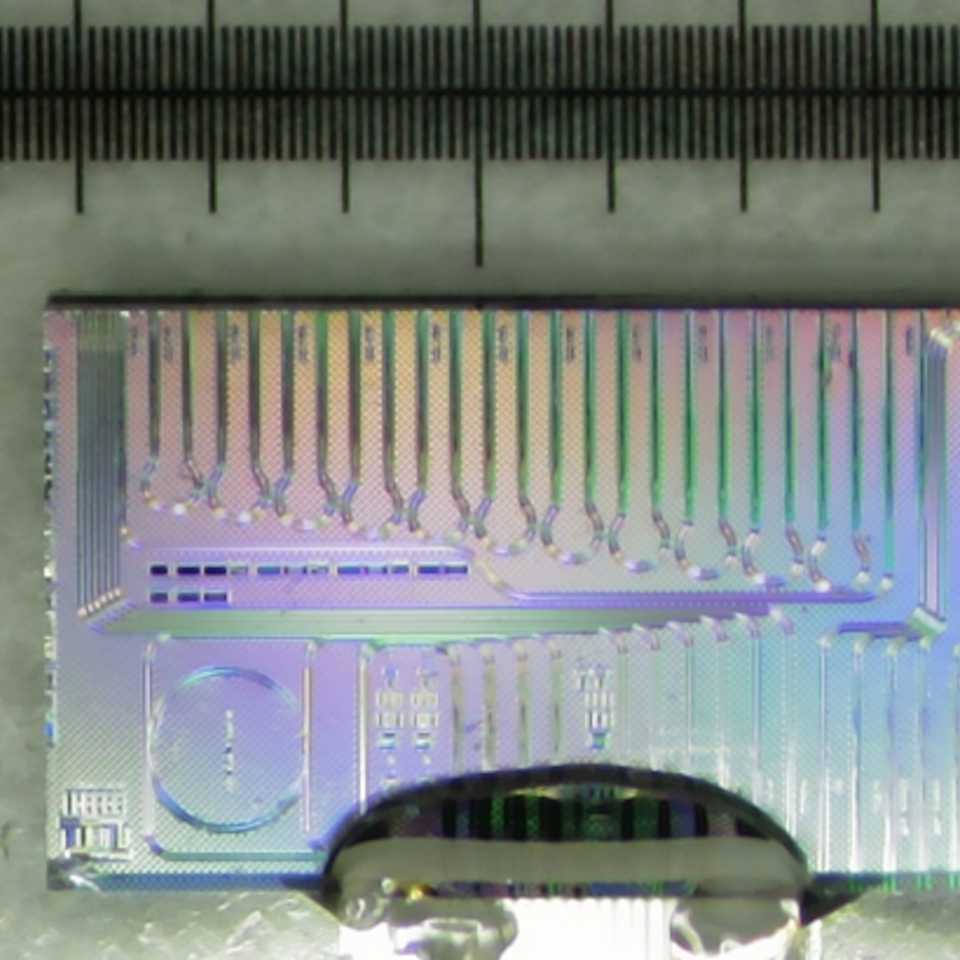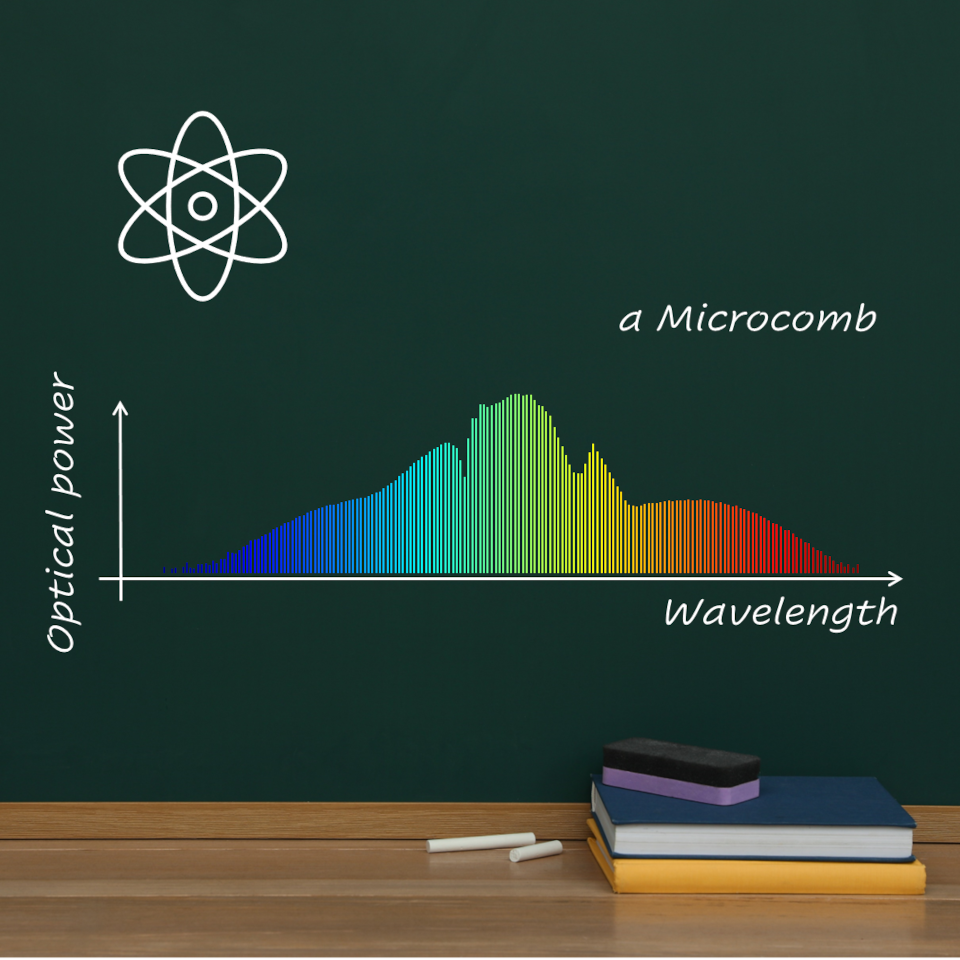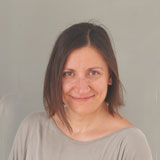Alessia Pasquazi
Professor in Nonlinear Optics – Physics
Professor Alessia Pasquazi is an expert in nonlinear optics – her work is at the forefront of ultrafast photonic technologies, including microcombs. She has joined Loughborough from the University of Sussex where she was Co-Director of the Emergent Photonics laboratory (EPic) and led research around ultrafast integrated optics – phenomena occurring on a timescale of picoseconds or less.
Delivering ultrafast photonic technologies
Microcombs or optical frequency combs are a type of laser, usually based on highly nonlinear micro-resonators. Often referred to as ‘optical rulers’, they can measure frequencies with extreme precision. Embedded in microchips, they provide a building block for a new generation of quantum sensors with applications spanning portable navigators, medical devices, and advanced communication systems. Alessia’s work is making significant advances in this field.
My work focuses on the interactions between light and matter and how these relationships can be harnessed to create an array of applications for positive social change.
In some respects, non-linear physicists (like me) are dreamers and blue-sky thinkers, inspiring new technologies. Yes, we need to be good at the science, but we also need to be creative and think laterally.
For me, non-linearity makes things alive and interesting. In optics, it makes the photons interact and communicate – mimicking many processes that we see in the natural world’s living systems.

What’s more, this area of physics is a powerful tool. Photonic engineering is shaping many areas of our everyday life – spanning communications, healthcare, space exploration and quantum technologies.
My current area of research in this area (with colleagues at the Canadian INRS-EMT, City University of Hong Kong and the Australian Swinburne University of Technology) – microcombs – opens up some really exciting possibilities – the detection of exoplanets, precise diagnostic scanning of the human breath, and the accurate measurement of time (with colleagues at Birmingham and Sussex).
Microcombs are a fundamental part of the optical atomic clock – a technology with wide-ranging applications alongside its precise timekeeping.
As part of the Loughborough community, I hope to continue to pursue my research and develop my technology while educating the next generation of scientists to create positive social change.

For example, the GPS in our phones and cars is reliant on a clear satellite signal which can be a problem in some remote areas and tunnels. Portable atomic clocks could be used to support an accurate form of geo-mapping without the need for a satellite signal.
In 2019, my team at EPic made a breakthrough – introducing a new type of wave. Our laser cavity soliton microcombs overcame some of the efficiency limitations in the field, taking portable atomic clocks one step closer to replacing satellite mapping altogether.
To continue these developments my research focus is on defining new paradigms for describing complex optical systems, and develop holistic modelling of nonlinear optical devices.
I’m also investigating new principles, methodologies and technologies for optical devices in integrated platforms while developing a world-leading programme in dissipative nonlinear systems for optical integrated and guided optics.
My research journey
You could describe my research journey as rather long and circuitous with some interesting and valuable diversions along the way.
However, I’ve always been fascinated by light. As a child I spent hours creating rainbows – by simply refracting light through water or prisms. My experiments often horrified my mother – so engrossed in what I was doing, the laundry hung out to dry or passers-by could receive an inadvertent soaking…
I was also inquisitive and interested in how things are made – and really enjoyed building things like paper telephones with string between them to carry sound waves. So, studying engineering was a natural progression, I guess.
I completed my MSc and PhD at the University Roma Tre – both in Electronic Engineering. My PhD studies were quite broad, exploring fibre optics and data transmission as well as non-linear optics, particularly soliton waves.
In 2008, I took up the challenge of leaving Rome for Canada where I joined the University of Quebec’s INRS-EMT as a Postdoctoral Fellow. My research here focused on integrated non-linear optics – the lasers used in microchips.
I stayed in Canada for five years, before joining the University of Sussex in 2013, having been awarded a two-year European Marie Curie Incoming Fellowship. After my Fellowship, I was able to remain at Sussex serving as a Lecturer, Senior Lecturer, Co-Director of EPic, and Reader before achieving my Professorship in 2021.
Something I’ve been heavily involved in and enjoyed over the years is conference organisation. Events – like the Optica Advance Photonic Congress and the Conference in Laser and Electro-Optics – create fantastic opportunities for researchers to get together and connect, learn from each other and develop new partnerships.
I’ve also been involved in grant panels that support early career researchers, including the Marie Curie Fellowships (EU) and Future Leader Fellowships (UK). Learning about young researchers’ work is fascinating – and being able to support them along the way is hugely rewarding.
At Brighton, I was an active champion of equality, diversity and inclusion – and plan to continue my efforts at Loughborough to ensure that my students and colleagues work in a respectful, nurturing environment that supports them in achieving their potential.
For me, joining Loughborough is an exciting challenge – an opportunity to be part of a growing and inspiring research community whose work is pushing back boundaries and creating real impact.
As part of this community, I hope to continue to pursue my research and develop my technology while educating the next generation of scientists to create positive social change.
